| 11 |
|
| 12 |
|
| 13 |
1944 -- Count Yorinaga
Matsudaira died at age 70. (Born in 1874, he was Speaker of the
Upper House/House of Peers in Japan from
1937 until his death. His interest in bonsai began after the Great Kanto Earthquake of 1923 [see Sep 1 above].
Perhaps not so coincidentally, this was the year after the death of his law school sponsor, Count
Ökuma Shigenobu, who was a renowned bonsai
afficiando. Matsudaira became one of the most well-known growers and collectors of miniature bonsai.
He is credited with naming very small bonsai as shohin. His collection eventually reached a
thousand specimens of excellent quality which he and his wife, Akiko the Countess, tended with great
enthusiasm. Whenever he was on a trip, he used to carry some of his favorite bonsai with him in a basket
specially designed and made for the purpose. In 1934 he was named the first president of the newly-formed
Kokufu Bonsai Association. [After he died during the war, many of his miniature bonsai would be destroyed by the bombings. Some of them would be carried away from Tokyo to the country, to escape the dangers of war, but these would suffer because his widow was short of help, and some of the bonsai would die. About two hundred would survive and be brought to Atami. The Countess would write a short chapter about the collection for the Brooklyn Botanic Garden's 1953 Handbook on Dwarf Potted Trees. In 1975 a 208 page commemorative book, Matsudaira Mame Bonsai Collection Album, would be published in Japanese which would include over 230 photos of the trees, viewing stones, garden, and the couple. The Countess would die the following year.] 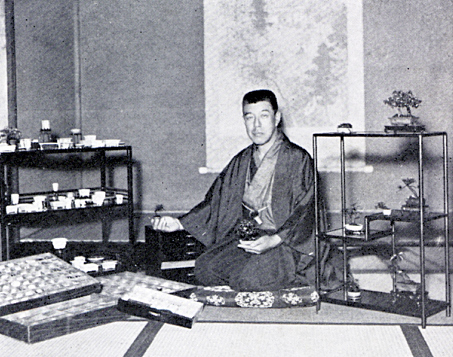
|
| 14 |
1986 -- California teacher Bob Kato died of cancer. (He had been teaching
formal lessons in bonsai since at least 1972. Sei Boku Bonsai Kai was "born" on April 27, 1983 at Bob's home
in Belmont, California. This was a gathering of about 15 or so founding enthusiasts, including Shizue Baney, and
pupils of Kato-sensei. The group then met at the San Mateo Garden Center on the 4th Wednesday afterwards.
Bob conducted most of the meetings during the next three and a half years or so. Bob is credited with developing
the Golden State Bonsai Federation logo concept, and he was one of the teachers
at the GSBF Sacramento Convention in November 1980.) [A couple of years after Bob died, his widow would decide to
start selling some of the bonsai and pots. Many of his students would jump at the opportunity to own a legacy. A
Satsuki azalea 'Osakazuki' (Rhododendron indicum cv. 'Osakazuki') would be donated to the Golden State Bonsai Federation
Collection North Garden in the Lake Meritt Garden Center, Oakland, CA in memory of Rose and Bob Kato.]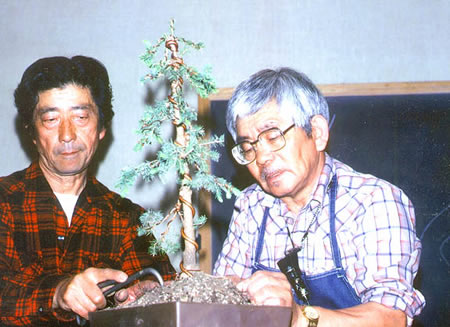
2003 -- Kazuya Morita passed away at the age of 75. (He had worked for the Mainichi Newspaper Company after his graduation from university. He was asked to work for the Nippon Bonsai Association and started in 1980 as the editor-in-chief for the NBA's magazine Bonsai Shunju (until 1988). At the same time, he was very active in promoting international exchange and organizing many activities and events when Bonsai was becoming popular internationally. He played an indispensable role for NBA, particularly for the great success of the 1st World Bonsai Convention in Saitama, Japan in 1989. He was one of the persons who supported the establishment of WBFF. A well-known Bonsai hobbyist, he was introduced as a hobbyist 30 years ago in a Bonsai magazine. He never tried to enter the Kokufu Ten, the world's most prestigious exhibition, but he participated in many bonsai exhibits held by NBA. He was a man of details and was good at Zoki (deciduous) tree bonsai. However, for the last 10 years Mr. Morita was more involved in suiseki, especially with those called Hakkai-seki from Niigata. He and his older and younger brothers all used to go out together for the search of good suiseki.) 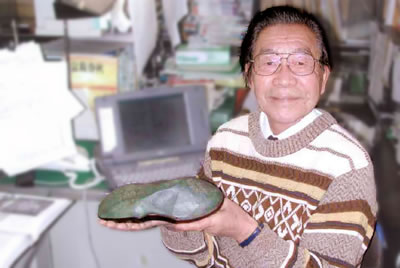
Kazuya Morita, 10/02.
("About Kazuya Morita" by Yuji Tamura, translated by Hiromi Nakaoji, World Bonsai Friendship Federation,
http://www.bonsai-wbff.org/kmorita.shtml
)
(Photo courtesy of Alan Walker, 05/11/07) |
| 15 |
1969 -- The Eastern Province Bonsai Society was founded by the well-known Gwen Skinner, based in Port Elizabeth in the
Eastern Cape of South Africa.
(The society website:
http://www.epbonsai.co.za/
) SEE ALSO: Mar 27
1973 -- In Tampa, delegates from ten established Florida bonsai societies came to the organizational meeting of the Bonsai Societies of Florida (BSF). BSF was formed out of necessity because these early clubs wanted to host an International Bonsai Congress and the only way to do it was to get practice. [So the first Florida State bonsai convention would be organized and held by BSF in 1973. On July 2-6, 1975 in Miami, BSF would host the International Bonsai Congress '75. Then Bonsai Clubs International would return twice for their annual convention and in 1993 it would be held in conjunction with the World Bonsai Friendship Federation's World Bonsai Convention in Orlando. BSF, entering the next century with 28 member societies, study groups and societies at large, was the first statewide bonsai organization in the United States. When the folks in California and then ten states in the Southeast wanted to form similar organizations, they would look to BSF for help and guidance.] (The society website: http://www.bonsai-bsf.com/history.html ) SEE ALSO: Feb 25, Apr 29 2008 -- Jane Nelson, a long-time resident of Seattle, Washington, passed away following a long valiant fight with cancer. (Jane was one of the original founders of the Puget Sound Bonsai Association in 1973, on the ABS Editorial/Publications Committee (1988-2000), ABS President (1993-95), ABS Symposium workshop leader (1998), winner of the ABS Ben Oki National Design Award in 2005, a long-time bonsai teacher and enthusiast, and a wonderful personal friend to many.) Memorials can be found here, pp. 2-5. 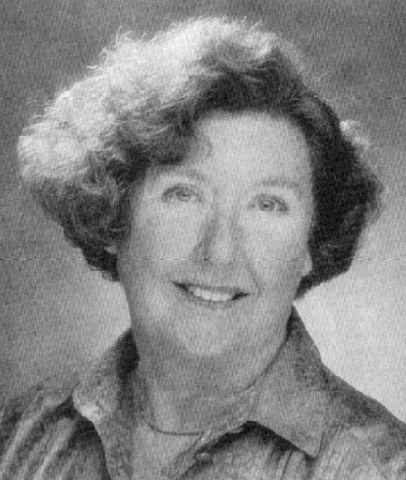
Jane Nelson
(Personal e-mail to RJB from Roger Case, 25 Sep 2008; Nelson, Jane "The History of the Puget Sound Bonsai
Association,"
http://www.bonsai-wbff.org/nabf/newsletter5/pugetsound.htm;
"PNBCA Bonsai Instructors," http://pnbca.com/instructors.html)
SEE ALSO: Mar 8
(ABS Bonsai Journal, Fall 1993, pg. 87) |
| 16 |
2001 -- A massive forest planting named "New York No Kokoro" was started as a living memorial to those who
died in the events of September 11. Bob
Pressler, bonsai artist, teacher and owner of Kimura Bonsai
Nursery in California created this with the help of at least 16 students. Consisting of an approximately
8' x 4' slab resembling natural stone and roughly shaped like the island of Manhattan, the custom-made base
represents the rock solid strength of the people of New York. Planted on the slab are 110 live, strong,
adaptable, and versatile Foemina Junipers varying in size from 4" to 46," along with two hollowed, charred dead
trunks 10" and 12" high of very old bonsai. The number of trees stands for the number of floors of the
World Trade Center. [The final planting would be completed on October 14. The forest would be on display at Kimura Bonsai Nursery until the spring of 2002 to insure a successful recovery from the transplanting and shaping process before traveling to New York City. The tax-deductible September 11th Living Memorial Bonsai Fund was established to raise the necessary funds for the transportation, maintenance of, and construction of a permanent display for the piece. [Unfortunately the 911 piece would never make it to NY as the city wanted a $50K endowment to accept it. It would be at Kimura nursery for years until a neighbor would cut down seven trees on the west side of Bob's property in August. This action would let loose a case of spider mites and blazing sun that would kill several of the major trees and a bunch of the small ones. The composition would be dismantled and replacements would be acquired for the dead trees. Bob would plan on reassembling it in 2021 and donating to the GSBF collection at the Huntington the next year.] (Originally from New Jersey, Bob has been doing bonsai since the age of ten when he first saw them at the Brooklyn Botanical Gardens, right next to the cafeteria there. The first tree he saw was a foot-tall 225-year-old Sargent juniper from Japan that was half deadwood and had a carpet of moss. As a teenager he cut school and traveled to Brooklyn where curator Frank Okamura showed him what bonsai really was and became his first teacher. After moving to California in September 1984, Bob went to a show at the Huntington Gardens the following March. There he met John Naka, who happened to be the one at the door who showed long-haired Bob around. He attended his first monthly California Bonsai Society meeting soon afterwards and Ted Matson was the demonstrator. The following weekend Bob and three older members went with Ted to the desert to collect Tufa stone and granite slabs for mixed plantings. By his third meeting, Bob was made vice-president of programs, in part because he was almost thirty years younger than the others and could put up banners and carry heavier things. In that club office he met Ben Oki, Harry Hirao, and the rest of the old time members of the southern California Bonsai community who became his teachers until 2000. Then Bob met Kenji Miyata and has been studying with him since 2001. (Bob became the owner of Kimura Bonsai Nursey in September 1995 in Northridge, CA. That first month was crazy scary - not only did he change from a well-paying established career to something he had no idea if it would work or not, but his friend Jim Kimura who he bought the nursery from and whom Bob counted on to help show him the way died two weeks after buying the nursery. On the day of his funeral, after the services Bob was watering and feeling overwhelmed. "I said out loud, 'now what, Jim?' Clear as a bell I heard my friend's voice say 'finish watering'." That's what Bob did for the next two and a half plus decades. He never imagined then that bonsai would have taken him to the places it has or put the people he'd encounter into his life. He taught ongoing classes each month at the nursery. He also traveled and conducted classes and workshops for bonsai clubs, individuals and corporate team building groups. He loves to share his knowledge and passion of bonsai with others.) [In 2018 he would become president of the California Bonsai Society and his first official duty would be to attend Bon Oki's funeral. So after he championed establishing the Ben Oki Scholarship. The Society by this time was only meeting quarterly and had been stagnating. Bob would devote much time to bringing the club into the 21st century and turning it into a resource for the bonsai community, establishing a scholarship fund for the study of bonsai and starting the Visiting Artist Program that would bring international artists to Los Angeles to teach and share their knowledge with several of the local clubs. By the Fall of 2020, the Program would have had Will Baddeley from England (April 2017), Pedro Morales from Puerto Rico (September 2018), Elsa Boudouri from Greece and Italy (February 2019), Tomohiro Masumi from Japan (May 2019), Liliana Tello Ortiz from Costa Rica (July 2019), from the USA, Todd Schlafer (November 2019), and Sergio Cuan (February 2020), with many more international artists to come. [On September 5, 2022, Bob would close his Kimura Bonsai and Landscape Nursery, sell the property and be moving his home and nursery northwest 26 miles away to Castaic, CA in rural LA county. His plan would be to reopen a new Kimura in January 2023 with a full schedule of workshops and classes and a big grand re-opening celebration that is sure to be memorable. See also the two-part episode of the Bonsai Time Podcast from late February 2024 "Why You Should Apply for the Ben Oki Scholarship with Bob Pressler - Bonsai Time Podcast Ep31 Part1" and Ep32 Part2.] 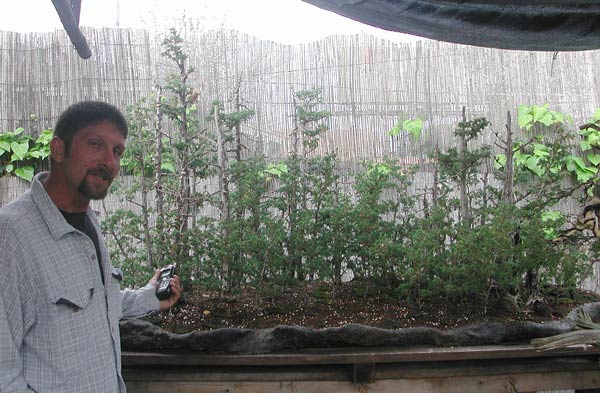
Bob Pressler with "New York No Kokoro" by Walter Pall, 03/04/05 (Photo courtesy of Alan Walker, 05/11/07) 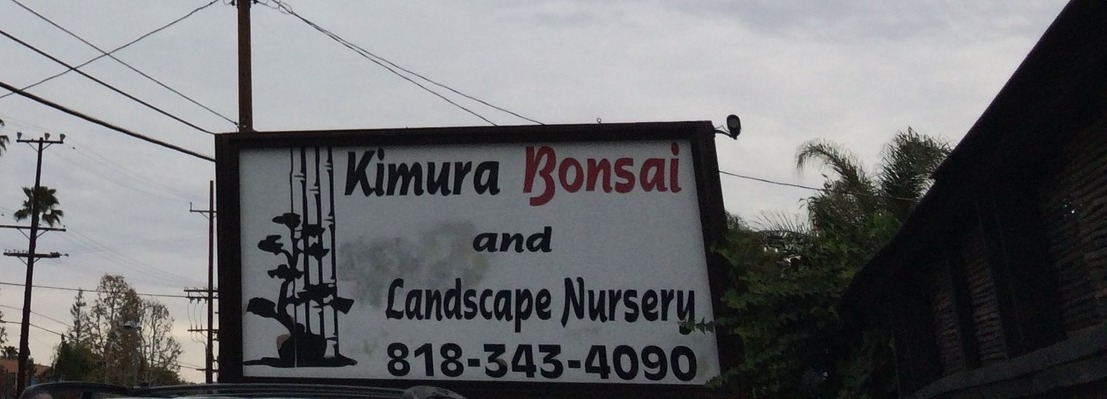
Kimura Bonsai Nursery Sign, 1995-2022
("New York No Kokoro (The Heart of New York)" by Bob Pressler, Golden Statements, GSBF, Vol. XXV,
No. 1, January/February 2002, pp. 28-29; FB messenger to RJB on Oct 21, 2020 in reply to questions about;
Facebook by RP posting on September 5, 2022; Bonsai Time Podcast recorded February 26, 2024
"Why You Should
Apply for the Ben Oki Scholarship with Bob Pressler - Bonsai Time Podcast Ep31 Part1".)
SEE ALSO: Jan 26, Mar 12, May 5
|
| 17 |
1990 -- The Fuku-Bonsai Center opened for business on a beautiful 17-acre
site on the island of Hawaii. Founded by David Fukumoto, the center features nine themed gardens, including
the Hawaii State Bonsai Repository, whose first tree would be put into place on Sept. 21, 1990 After a
year-long shake down period a two-day grand opening celebration would be held Sept. 21-22, 1991. [A fungus
problem which had begun about 1987 would be exascerbated in the early 1990s when defective fungicide would kill
off most of the nursery plants. The Kona location would be closed and a new facility would be started in
Kurtistown by the end of 1995.]
("Big Bonsai News from The Big Island," ABStracts, ABS, November 1990, pp. 1-2; "Fuku-Bonsai Center" by
David Fukumoto, Bonsai Journal, ABS, Fall 1991, pp. 8-11; "Fuku-Bonsai Recovering!" by David Fukumoto,
Bonsai Magazine, BCI, September/October 1995, pg. 46) SEE ALSO: Nov 4,
Nov 18
1997 -- Actor and clown Red Skelton died in a California hospital after a long illness at the age of 84. (A very talented composer, writer, painter, and collector, he also was an avid gardener specializing in bonsai trees. Some 300 specimens would be trucked from his large Palm Springs home (Sunset Zone 13, Low Desert Areas) to the one in Bel-Air (Sunset Zone 23, Thermal Belts of Southern California's Coastal Climate) when the former's weather got too hot. When the weather cooled off, the trees were moved back. In the early 1960s he was working on a script for a screwball comedy "about this ex-GI who tries to corner the bonsai market in Southern California. But he couldn't back it there so he reverses his name from O'Shay to Yahso-san and comes back to Japan [disguised as a Japanese bonsai gardener]." The movie, to be called "Kasa-san" or "Mr. Umbrella," was never made but some locations in Japan were scouted.) ("Ask the Televisionary," TV Guide Online, May 11, 2004, http://www.tvguide.com/tv/televisionary/040511.asp?datediff=760 ; "Goodnight, Red Skelton And May God Bless...", http://www.wkvi.com/091897.htm ; "Red Skelton and Indepak," http://www.indepak.com/skelton.htm; "Red Skelton's film idea -- It grows on you," Stars and Stripes, July 12, 1963, per hemmy in a March 13, 2018 posting in BonsaiNut.) 2005 -- Arthur Douglas "Doug" Hall died at age 89. (Doug and his wife Steph were largely responsible for introducing bonsai to South Africa. In the late 1950's, a floral exhibition was held in Johannesburg City Hall with a first-in-South Africa Ikebana exhibition. By late Friday afternoon, only a few Ikebana exhibitors had pitched up and Bert Lacey, the then Secretary of the Transvaal Horticulture Society, phoned Doug in a panic, asking for a few bonsai to fill the space. This event even led to a radio interview and, as a direct result, a branch of the Bonsai Society of South Africa was formed. Doug was a founding member of the Eastern Bonsai Society in January 1972 and started holding informal meetings in Primrose, Germiston. Initially the club insisted on running on a limited membership, but this soon had to be abolished. Doug co-wrote with Don Black The South African Bonsai Book in 1976 (which was translated into Afrikaans the following year). Growing Bonsai in South Africa was first published in 1988. Doug stepped down as Secretary the next year due to ill health. When Doug's health deteriorated to the extent that he could not look after his trees, he gave them all away. But at some stage, the club arranged to have a "Tribute to Doug Hall" and invited everyone who had owned one of his trees to participate. In 1996 Doug was invited to become the "Patron of the East Rand Bonsai Kai" -- which he accepted. He had a wonderfully easy way about him. Of Doug, people had said that he led by example and freely shared his knowledge of horticulture and bonsai alike. He continued to help structure club meetings and handled workshops. He played an instrumental role in the club's financial situation by coming up with excellent sought-after raffle material. In 2002, Doug signed a copyright agreement with John Haw of Jo-Da Bonsai Distributors, who are also the sponsors, for a revision of his 1988 book. Unfortunately Doug could not attend the launch of his book, by far the best manual for beginners in bonsai and by which students in the southern hemisphere would be allowed to reap the benefits of his acute knowledge of trees.) 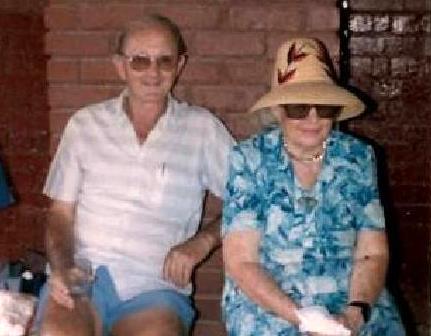
Doug and Steph Hall
("News" by Don and Pam Norquoy, http://www.saba.org.za/news.htm,
accessed 10/23/2005; "Doug Hall," Bonsai in South Africa,
June/July 2011 issue, pg. 8, which also has
this "Picture kindly supplied by Pam Norquay") SEE ALSO: Mar 9
(Photo by Pam Norquay, "Doug Hall," Bonsai in South Africa, June/July 2011, pg. 8) |
| 18 |
1910 -- Ann Kimball Pipe was born. [Her claim to fame in the bonsai world
would be a book published in 1964 by Appleton-Century entitled Bonsai, The Art of Dwarfing Trees. A
short contemporary review of her book is
here, and
another is here.
Her article "Shaping dwarfed trees"
appeared in the Missouri Botanical Garden Bulletin, Mar-Apr 1969, pp. 24-29. A more recent review of
the book can be found
here.
(This happened to be the first bonsai book RJB read back in late 1969.) [Also, Ann would write Reproducing Furniture in Miniature (1976) and Mastercrafting Miniature Rooms and Furniture: techniques for the serious beginner (1979). The Miniature Museum of Greater St. Louis exhibited eight 3/4"=1' scale roomboxes created by Ann in the 1970s, illustrated here. The Nutshell News Magazine, For the Complete Miniature Hobbyist, January 1984 issue, would have her article "Innovating in Unique Scales." Fay Zerbolio would write the article "Ann Kimball Pipe's Rooms in St. Louis" in the Dec. 2005 issue of Miniature Collector Magazine.] 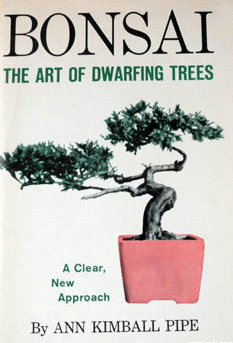
("Ann K. Pipe - Death Record," http://death-records.mooseroots.com/l/161628672/Ann-K-Pipe) 1929 -- Kamiya Houkichi was born in Noto, Ishikawa, Japan. [He was the son of a temple carpenter and sculptor. As Kamiya Ryuen in Ohta-ku, the southernmost ward of Tokyo, he would begin creating pots for bonsai in 1977. Although he would make some glazed pots in the early days, he'd mainly make clay pots using a unique hollowing technique. A method different from most other potters, Ryuen would chip/carve the pot out of a massive lump of clay little by little. This would be a very time-consuming process -- the making of a single pot sometimes would take him as much as an entire day. More involved than wheel, slab, or mold production, this would result in a much higher quality pot that would be more resistant to breakage. His pots would also be made from a special type of clay that could only be found in a few areas of Japan. It would have a remarkable quality: during the firing process a glittering patina would emerge from the clay. This would be a natural phenonmenon and the patina could not be influenced or predicted. Since this clay would no longer be found after a time, the small number of pots made with it would become very valuable. Small details like carving to the bottom of the pot, banded junctions, feet without join unions, and unique shapes would make Ryuen pots stand above other unglazed potters of his generation. A tribute website for him, ryuen.com, would be active from about 2000 (see photo below) through 2010.] 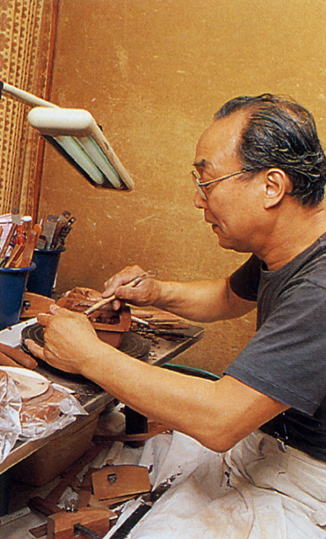
(van der Hoeven, Maarten "Special pots from Japan," Bonsai Focus, 4/2008, July/August, #116, pg. 87; "Pots By Kamiya Ryuen," Japanese Bonsai Pots Blog, November 9, 2011; "Kamiya Ryuen pots and process," Japanese Bonsai Pots Blog, June 11, 2012) |
| 19 | 1917 -- Alice Toshiko Mizunaga was born. [She would go on to meet a young man named John Naka in 1935, marry him and be his companion for 69 years.] (Manning, Cheryl "Alice Naka, September 19, 1917-August 1, 2011," National Bonsai Foundation, Fall/Winter 2011 newsletter, pg. 1.) |
| 20 |
1988 -- Constance Tortorici Derderian died. (She had taken the first bonsai
course the Brooklyn Botanic Garden ever offered in 1954 and became one of the country's leading proponents of
subtropical bonsai. She was guest editor of the BBG's Bonsai For Indoors Handbook (1976).
Connie was a founding member of the American Bonsai Society in 1967 and served as a director for many years.
From 1969 to 1984 she served as honorary curator of the
Arnold Arboretum's Larz Anderson bonsai
collection. For her dedicated work in bonsai, in 1979 she received the Gold Medal of The Massachusetts
Horticultural Society. A highlight of Connie's tenure as curator came in the fall of 1982, when three plants
from the Larz Anderson Collection were put on display at the Boston Museum of Fine Arts to celebrate the opening
of its newly renovated Asian wing. In June 1987 the newly renovated bonsai house at the Arnold Arboretum,
with an improved security system added to a structurally sound Douglas fir building whose new doors provided
visitors with an unobstructed view of the collection, was dedicated to her.)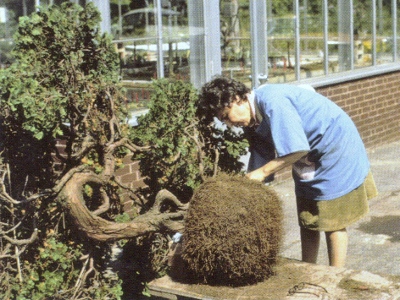
"Connie Derderian working on one of the Larz
Anderson 'Chabo-hibas' in 1970. From the Archives of the Arnold Arboretum." (Del Tredici, Peter "From Temple To Terrace," Arnoldia, Vol. 64, Numbers 2-3, 2006, pg. 26) 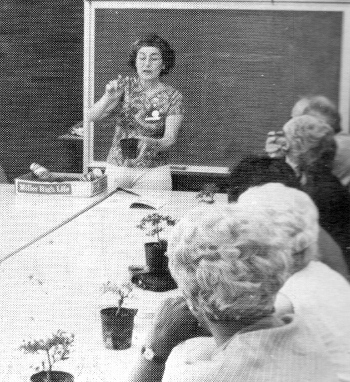
"Constance R. Derderian points out the unique
(Early American Bonsai: The Larz Anderson Collection of the Arnold Arboretum by Peter Del Tredici,
(Jamaica, MA: Arnold Arboretum, Harvard University, 1989), pp. 12-13; "In Memory," ABStracts, ABS, Vol.
16, No. 4, November 1988; "From Temple to Terrace, The Remarkable Journey of the Oldest Bonsai in America" by
Del Tredici (Jamaica, MA: Arnold Arboretum, Harvard University: Arnoldia 64/2-3, 2006), pg. 26;
McGourty, Jr., Frederick "Letter From the Brooklyn Botanic Garden," pg. 3, Bonsai For Indoors
Handbook) SEE ALSO: Apr 13, May 12, Aug 3
qualities of Sea-grape for bonsai." ("Bonsai Workshops," Bonsai Journal, ABS, Vol. 12, No. 4, Winter 1979, pg. 90) |